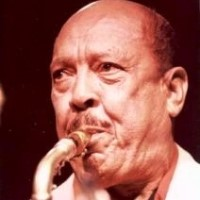Home » Jazz Musicians » Marshal Royal
Marshal Royal
Marshal Royal, Jr. was an American clarinettist and alto saxophonist best known for his work with Count Basie, with whose band he played for nearly twenty years. Marshal Royal Jr. was born into a musical family in Oklahoma, the elder brother of trumpeter Ernie Royal, and learned to play piano, violin, guitar, clarinet and sax while still a child. The family had moved to Los Angeles, California by the time he was five, and he always considered himself to be a Californian. His mother, Ernestine Walton Royal, began giving him piano lessons when he was three, and his father, from Sherman, Texas, began teaching him violin when he was six. (Royal notes in his memoir: "We seem to be only people named 'Marshal' who spell it with only one 'L.'") Because his father was such a successful music teacher in Sherman, a street there is named for him: Music Street. Royal's first professional gig was with Lawrence Brown's band at Danceland in Los Angeles, and he soon had a regular gig at the Apex, working for Curtis Mosby in Mosby's Blue Blowers, a 10-piece band. He then began an eight-year (1931–1939) stint with the Les Hite orchestra at Sebastian's Cotton Club, which was near the MGM studios in Los Angeles. He spent 1940 to 1942 with Lionel Hampton, until the war interrupted his career. With his brother, Ernie, he served in the U.S. Navy in the 45-piece regimental band that was attached to the Navy's preflight training school for pilots at St. Mary's College in Moraga, California. Because he was married, Royal was allowed to stay off-campus, and like several others in the band, he found lodging in San Francisco, 26 miles away. The band's routine at St. Mary's consisted of playing for colors daily at 8.a.m, and then rehearsing until they played again for the cadets to march to lunch, at noon. Bandsmen were allowed to eat in the same lunchroom as the cadets, after the cadets were finished eating, and they were fed the same food. The band also played for bond rallies, regimental reviews, at football games, and in concerts for the cadets and the community. Two swing bands were organized from the larger regimental band, and they played for smokers and dances at USOs and officers clubs. Royal was leader of the Bombardiers, one of those bands, which also included his brother, Ernie, Jackie Kelson (who later became known as Jackie Kelso), Buddy Collette, Andy Anderson, Earl Watkins, Jerome Richardson, Wilbert "Willie" Baranco, Curtis Lowe and Quedellus Martin, as well as Vernon Alley (also from the Lionel Hampton band)[1] who would become "the most distinguished jazz musician in San Francisco history."[2] After his military service, Royal played with Eddie Heywood, then went on to work in studios in Los Angeles, California.
Read moreTags
Bobby Plater + Marshal Royal

Source:
JazzWax by Marc Myers
Saxophonists in Count Basie's band didn't record much as leaders. They didn't have to considering how busy Basie kept them on the road. The notable exceptions, of course, were tenor saxophonists Frank Wess, Frank Foster, Budd Johnson and Eddie “Lockjaw" Davis. On the other end of the spectrum, baritone saxophonist Charlie Fowlkes didn't record a single track under his own name. Tenor saxophonists/flutists Jerome Richardson recorded a handful and Eric Dixon recorded just one. Alto saxophonists Bobby Plater and Marshal ...
read more









